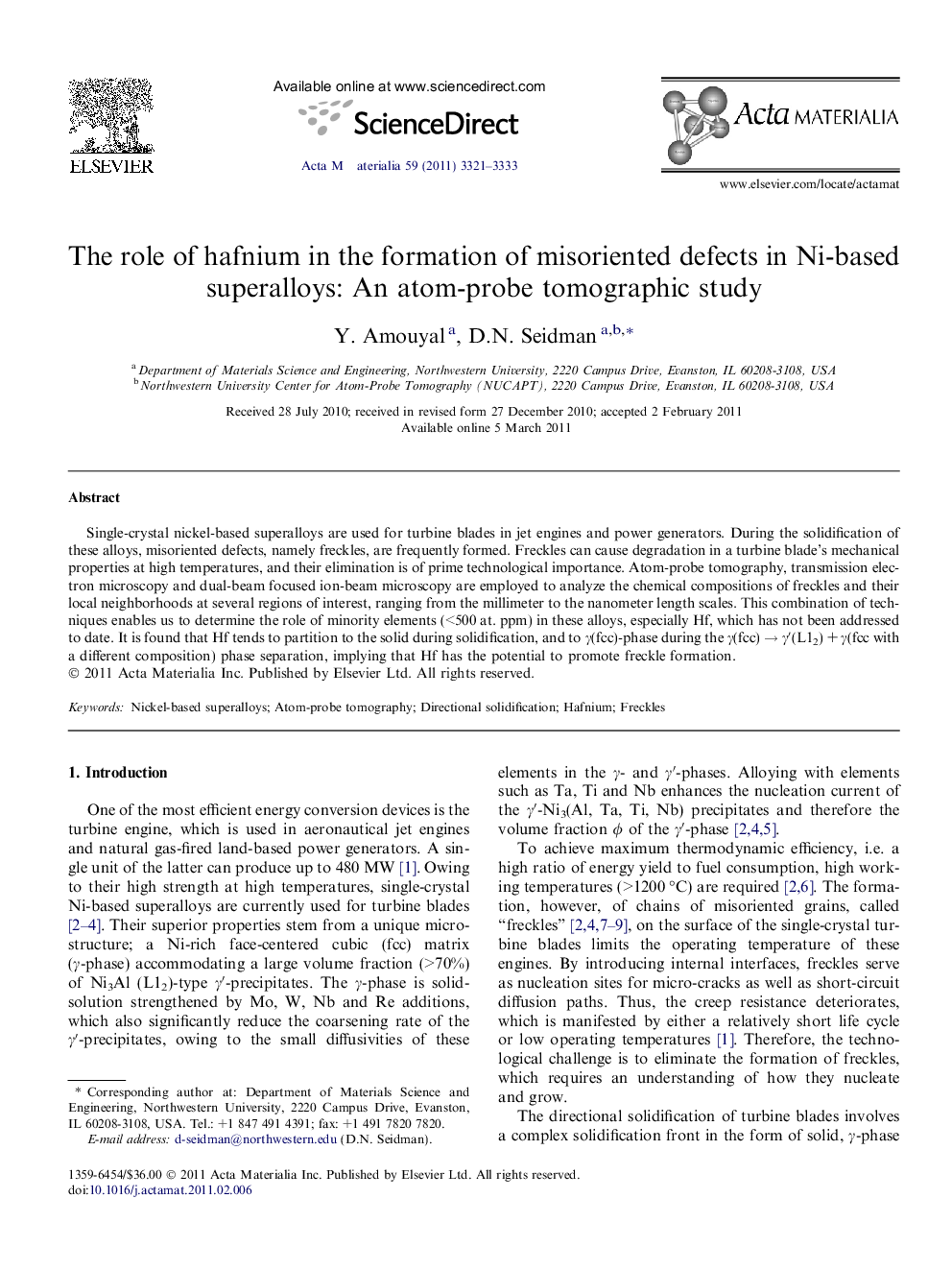| Article ID | Journal | Published Year | Pages | File Type |
|---|---|---|---|---|
| 1447131 | Acta Materialia | 2011 | 13 Pages |
Single-crystal nickel-based superalloys are used for turbine blades in jet engines and power generators. During the solidification of these alloys, misoriented defects, namely freckles, are frequently formed. Freckles can cause degradation in a turbine blade’s mechanical properties at high temperatures, and their elimination is of prime technological importance. Atom-probe tomography, transmission electron microscopy and dual-beam focused ion-beam microscopy are employed to analyze the chemical compositions of freckles and their local neighborhoods at several regions of interest, ranging from the millimeter to the nanometer length scales. This combination of techniques enables us to determine the role of minority elements (<500 at. ppm) in these alloys, especially Hf, which has not been addressed to date. It is found that Hf tends to partition to the solid during solidification, and to γ(fcc)-phase during the γ(fcc) → γ′(L12) + γ(fcc with a different composition) phase separation, implying that Hf has the potential to promote freckle formation.
Research highlights► We apply atom-probe tomography (APT) to study freckle formation in Ni-alloys. ► We combine APT with EDS to quantify elemental partitioning in large areas. ► Solid/liquid redistribution of elements correlates with their γ/γ′ partitioning. ► We observe Hf partitioning to the gamma-phase, which depends on Cr concentration. ► Hf partitioning to the solid-phase during solidification promotes freckle formation.
